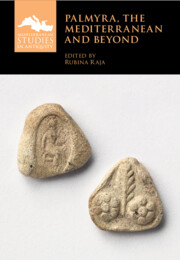Refine search
Actions for selected content:
24162 results in Ancient history
Chapter 4 - The Imperial Cosmopolis
-
- Book:
- The Roman Empire and World History
- Published online:
- 31 October 2025
- Print publication:
- 30 October 2025, pp 86-118
-
- Chapter
- Export citation

The Archaeology of the Cyclades in the Roman and Late Antique Periods
- Globalization, Christianization and Resilience
-
- Published online:
- 23 October 2025
- Print publication:
- 06 November 2025
Chapter 1 - Introduction
-
- Book:
- Ancient Assyrians
- Published online:
- 09 October 2025
- Print publication:
- 23 October 2025, pp 1-16
-
- Chapter
- Export citation
Preface
-
- Book:
- Ancient Assyrians
- Published online:
- 09 October 2025
- Print publication:
- 23 October 2025, pp xi-xii
-
- Chapter
- Export citation
Chapter 4 - Aššur, King of the Gods
-
- Book:
- Ancient Assyrians
- Published online:
- 09 October 2025
- Print publication:
- 23 October 2025, pp 158-259
-
- Chapter
- Export citation
Maps
-
- Book:
- Ancient Assyrians
- Published online:
- 09 October 2025
- Print publication:
- 23 October 2025, pp ix-x
-
- Chapter
- Export citation
Index
-
- Book:
- Ancient Assyrians
- Published online:
- 09 October 2025
- Print publication:
- 23 October 2025, pp 305-312
-
- Chapter
- Export citation
Abbreviations
-
- Book:
- Ancient Assyrians
- Published online:
- 09 October 2025
- Print publication:
- 23 October 2025, pp xix-xxvi
-
- Chapter
- Export citation
Note on Transcription and Translation
-
- Book:
- Ancient Assyrians
- Published online:
- 09 October 2025
- Print publication:
- 23 October 2025, pp xvii-xviii
-
- Chapter
- Export citation
Chapter 3 - They Swore by the Life of the City
-
- Book:
- Ancient Assyrians
- Published online:
- 09 October 2025
- Print publication:
- 23 October 2025, pp 77-157
-
- Chapter
- Export citation
Contents
-
- Book:
- Ancient Assyrians
- Published online:
- 09 October 2025
- Print publication:
- 23 October 2025, pp vii-viii
-
- Chapter
- Export citation
Copyright page
-
- Book:
- Ancient Assyrians
- Published online:
- 09 October 2025
- Print publication:
- 23 October 2025, pp iv-iv
-
- Chapter
- Export citation
Bibliography
-
- Book:
- Ancient Assyrians
- Published online:
- 09 October 2025
- Print publication:
- 23 October 2025, pp 269-304
-
- Chapter
- Export citation
Dedication
-
- Book:
- Ancient Assyrians
- Published online:
- 09 October 2025
- Print publication:
- 23 October 2025, pp v-v
-
- Chapter
- Export citation
Chapter 5 - Conclusion
-
- Book:
- Ancient Assyrians
- Published online:
- 09 October 2025
- Print publication:
- 23 October 2025, pp 260-268
-
- Chapter
- Export citation
Chapter 2 - The Theory of Social Categories
-
- Book:
- Ancient Assyrians
- Published online:
- 09 October 2025
- Print publication:
- 23 October 2025, pp 17-76
-
- Chapter
- Export citation
Acknowledgments
-
- Book:
- Ancient Assyrians
- Published online:
- 09 October 2025
- Print publication:
- 23 October 2025, pp xiii-xvi
-
- Chapter
- Export citation
Epigraph
-
- Book:
- Ancient Assyrians
- Published online:
- 09 October 2025
- Print publication:
- 23 October 2025, pp vi-vi
-
- Chapter
- Export citation

Palmyra, the Mediterranean and Beyond
-
- Published online:
- 21 October 2025
- Print publication:
- 16 October 2025

Between Yahwism and Judaism
- Judean Cult and Culture during the Early Hellenistic Period (332–175 BCE)
-
- Published online:
- 18 October 2025
- Print publication:
- 04 December 2025
-
- Element
- Export citation
